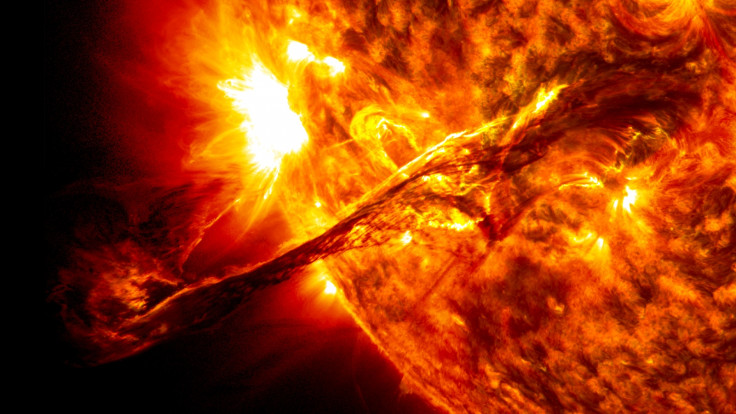Seasons on the sun explain Cold War-era puzzle of powerful solar flare peaks

A Cold War-era puzzle has been solved by Nasa scientists with the discovery that the sun undergoes seasonal variability over the course of two years.
The Gnevyshev Gap, reported by Soviet scientists in the 1940s, asked why powerful solar flares and coronal mass ejections often peak a year after the maximum number of sun spots are observed.
It appears this is because these seasonal changes on the sun cause an upswing in solar disturbances after the peak in the solar cycle.
Solar seasons
Nasa scientists at the National Centre for Atmospheric Research (NCAR) have found the sun has a sort of seasonal variability, with activity waxing and waning roughly every two years. This activity affects the peaks and valleys of the Sun's 11 year solar cycle, occasionally amplifying and weakening the solar storms that can affect Earth's atmosphere.
Variations appear to be driven by changes in the bands of strong magnetic fields in the Sun's hemispheres.
Overlapping bands are fuelled by the rotation of the Sun's interior. Bands moving within the northern and southern hemispheres peak over a period of about 11 months, then they start to wane.
Published in the journal Nature Communications, researchers believe their findings will help to predict huge geomagnetic storms that can disrupt satellite operations, power grids and communications.
Lead author Scott McIntosh said: "What we're looking at here is a massive driver of solar storms. By better understanding how these activity bands form in the Sun and cause seasonal instabilities, there's the potential to greatly improve forecasts of space weather events."
Findings of this study are part of a larger project examining the influence of magnetic bands on interrelated cycles of solar magnetism. For example, another paper from last year found the 11-year sunspot cycle was related to two overlapping parallel bands of opposite magnetic polarity that migrate over 22 years from high solar latitudes.
Observations of twisted, ring shaped bands showed they rise from the solar interior and on to the surface, where they correlated with changes in solar flares and CMEs. These migrating bands, they conclude, produce seasonal variations that are as strong as the 11-year cycle.
Study co-author Robert Leamon said: "Much like Earth's jet stream, whose warps and waves have had severe impact on our regional weather patterns in the past couple of winters, the bands on the Sun have very slow-moving waves that can expand and warp it too. Sometimes this results in magnetic fields leaking from one band to the other. In other cases, the warp drags magnetic fields from deep in the solar interior, near the tachocline, and pushes them toward the surface."
Surges of magnetic fuel destabilise the corona "catastrophically", they said, and are the driving force behind the most destructive solar storms: "These surges or 'whomps' as we have dubbed them, are responsible for over 95% of the large flares and CMEs--the ones that are really devastating," McIntosh said.
© Copyright IBTimes 2025. All rights reserved.






















